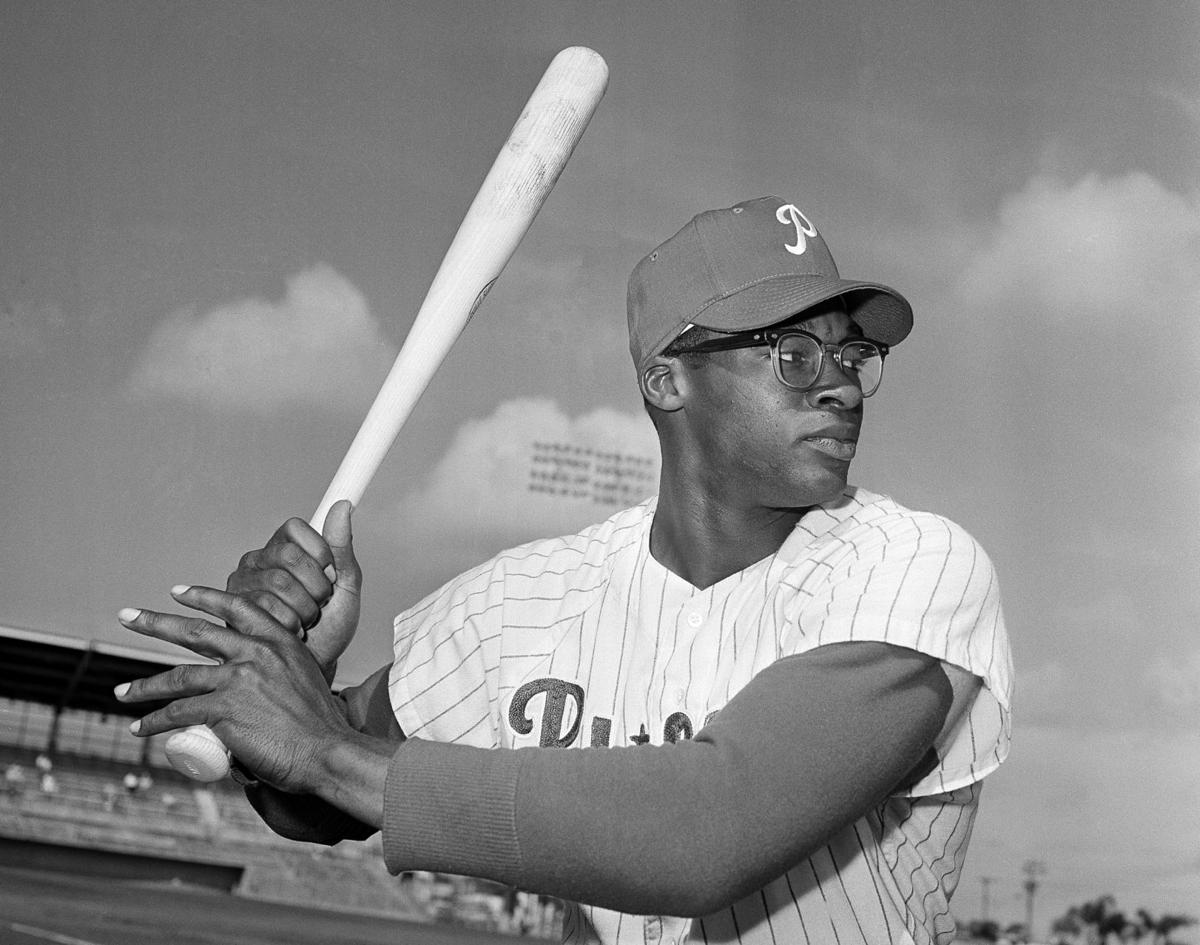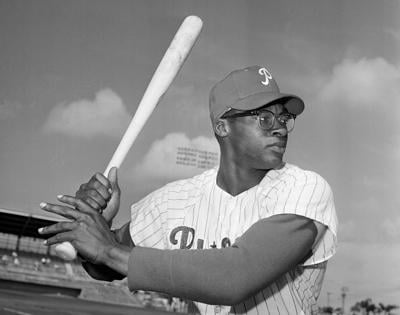Unfortunately, the list of prominent ėŻ╠ę╩ėŲĄ sports figures lost in 2020 grew so long that some of the names on it did not seem to receive a proper ėŻ╠ę╩ėŲĄ sendoff.
I fear Dick Allen, introduced to Cardinals fans as ŌĆ£RichieŌĆØ before the 1970 season, is at risk of becoming an example.
For two reasons.
The first is that Allen is not a Hall of Famer, though he should be and probably will be the next time the Golden Days Committee considers his case. That overdue decision probably would have happened already, if this yearŌĆÖs opportunity has not been postponed because of the COVID-19 pandemic.
But for now, when we discuss the staggering team of Hall of Famers Major League Baseball lost in 2020, a list that includes Cardinals legends Bob Gibson and Lou Brock, Allen is not included. Hopefully that changes soon. ItŌĆÖs a shame Allen will not be alive to receive the news. He died on Dec. 7. He was 78.
People are also reading…
The second reason is that Allen spent just one season in ėŻ╠ę╩ėŲĄ, and it was a season in which AllenŌĆÖs remarkable hitting often was overshadowed because of various things that usually were out of his control.
The day after the power-lacking Cardinals traded Curt Flood, Tim McCarver, Joe Hoerner and Byron Browne to Philadelphia for a package that included the 28-year-old Allen, the top headline in the Post-Dispatch sports section was about the trade with the Phillies, but the secondary headline was about Flood announcing his retirement because he did not want to change teams. Flood was blazing baseballŌĆÖs trail toward free agency. Allen was playing second fiddle to history.
A trend continued.
The 34 home runs Allen smacked for the Cardinals in 1970 could not lift the team out of fourth place in the National League East. Manager Red SchoendienstŌĆÖs club was toast by the All-Star break.
The day Allen hit two home runs against his former Phillies team, Gibson struck out his regular-season best of 16.
The All-Star Game Allen attended as a Cardinal, starting at first base and hitting second for the National League, is remembered primarily for CincinnatiŌĆÖs Pete RoseŌĆÖs hard-charging, game-winning slide into catcher Ray Fosse in the 12th inning.
See what I mean?
Even the most dedicated Cardinals followers might forget that Allen, while initially expected to play in the outfield, started out at third base before shifting to primarily first for the Cardinals. But anyone who watched Allen swing his 42-ounce bat likely remembers the damage it did when it connected. There are Cardinals fans to this day who name Allen as one of their all-time favorite players because of the towering homers he hit that year. There is a Hall of Fame Post-Dispatch baseball writer who had this to say about Allen.
ŌĆ£He was the most fearsome hitter IŌĆÖve ever watched,ŌĆØ Rick Hummel shared, adding that he has always supported AllenŌĆÖs Hall of Fame case.
AllenŌĆÖs 34 homers in 70 held the high point for home runs by a Cardinals hitter for more than three decades between Stan MusialŌĆÖs 35 in 1954 and Jack ClarkŌĆÖs 35 in 1987. That 34-homer season still is tied for 25th-most in club history today, which is remarkable considering the combination of past steroid users and the helium-filled baseballs used these days.
And remember, AllenŌĆÖs home run total was cut short by a pulled hamstring that limited him to just six at-bats over the teamŌĆÖs final 34 games. If healthy, Allen likely would have snapped what was then Johnny MizeŌĆÖs 30-year-old club record of 43 homers.
Allen produced 101 RBIs and a whopping .560 slugging percentage for the 1970 team, one that traded for him because it was in desperate need of pop at the plate. (Sound familiar, current Cardinals fans?) Allen more than held up his end of the bargain, according to then Cardinals general manager Bing Devine, who admitted after he traded Allen to the Dodgers for infielder Ted Sizemore before the 1971 season that it was the team, not Allen, who did not work out.
ŌĆ£The figures tell you how much he produced,ŌĆØ Devine told the Post-Dispatch after the trade. ŌĆ£But unfortunately the club fell on its face.ŌĆØ
The Cardinals kept searching for answers until Whiteyball emerged. By then Allen was well-traveled and retired. Altogether he made seven All-Star teams, was the American League MVP with the White Sox in 1972 and compiled an 11-year span (1964-1974) that featured an average of 35 home runs per 162 games and a .940 on-base plus slugging percentage. That OPS was almost identical to Hank AaronŌĆÖs (.941 OPS) during that same time frame. Incredible.
Would AllenŌĆÖs stretch of dominance have been possible without his season in ėŻ╠ę╩ėŲĄ?
IŌĆÖll direct your attention to a cartoon by iconic Post-Dispatch cartoonist Amadee Wohlschlaeger that was published shortly after Allen arrived. It showed Allen happily bouncing out of a jail cell. The cell was labeled with a name. Philadelphia.
Allen, the National League rookie of the year in 1964 and All-Star in each of the three seasons that followed, had reached a precarious point with the Phillies before his trade to the Cardinals. So much so that he had taken to wearing a batting helmet in the field in case fans threw projectiles at his head. On top of vile racism, he had to worry about physical harm.
ėŻ╠ę╩ėŲĄ has not historically been the most inviting place to Black athletes in the past ŌĆö and thatŌĆÖs an understatement ŌĆö but it was a fresh start for Allen, even if there were questions about what kind of baggage he might bring along with his incredible power.
Allen had clashed with Phillies teammates to the point of engaging in fisticuffs. He positioned himself on the wrong side of journalists who did him no favors in shaping a negative reputation. He was known to enjoy spending time at the horse racing tracks. He more than once had a problem being punctual in a sport that cares a whole heck of a lot about showing up to things ridiculously early, let alone on time.
But whatever issues Allen had in Philadelphia did not become big problems in ėŻ╠ę╩ėŲĄ. Cardinal Nation embraced the slugger. He returned the love, calling his welcoming ovation, ŌĆ£the best thing that ever happened to me.ŌĆØ
Allen made the most of his fresh start with the Cardinals when it came, and it launched a five-season span that featured four All-Star seasons spread across three teams.
Ironically, AllenŌĆÖs departure from Philadelphia for ėŻ╠ę╩ėŲĄ probably played a role in Philadelphia, the Phillies and Allen later patching things up. Allen rejoined the Phillies for the 1975 and ŌĆÖ76 seasons. He even celebrated a number retirement ceremony there last September. Another one was planned for when fans could return to the ballpark post-pandemic, but Allen passed before it could occur. At least he saw his No. 15 raised.
ItŌĆÖs worth remembering that one of baseballŌĆÖs best hitters spent a season smashing baseballs for the Cardinals. Allen should be a Hall of Famer, and his story took a positive turn here.
ŌĆ£I wanted one season that I could play in peace,ŌĆØ Allen told the Post-Dispatch after his one-and-done season with the Cardinals ended. ŌĆ£And my wish was granted.ŌĆØ









